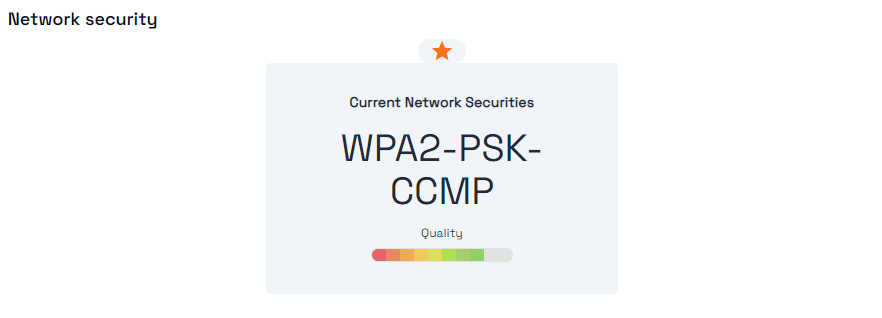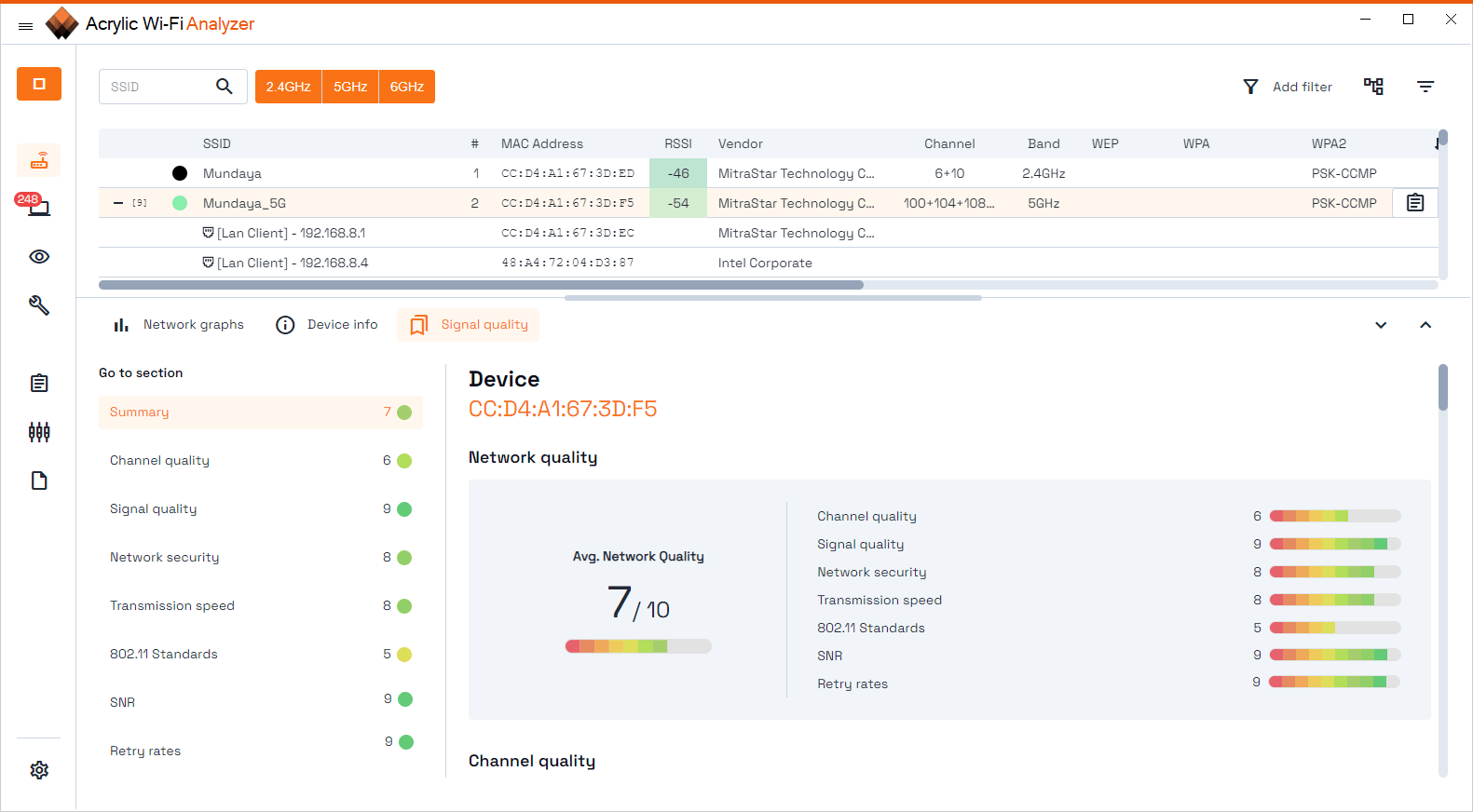Analyze and evaluate your wifi and Internet connection.
WiFi quality can be quickly diagnosed with a wifi analyzer such as Acrylic Wi-Fi Analyzer thanks to the network quality analysis functionality that will help you improve your internet connection and wifi quality. You will be able to select an access point to visualize the parameters affecting to the Wi-Fi quality, including network security aspects.
When monitoring the available wireless networks it is possible to select an access point and see in the network quality section multiple parameters that affect WiFi quality, including security aspects.
WiFi Quality Controls
- Channel quality: Interferences have a negative impact on WiFi quality. The more networks operating on the same channel, the more interferences each one will experience, causing frequent disconnections and packet loss on connected client devices. This control will help you find the best wifi channel.

- Signal quality: Signal strength is one of the factors that affects WiFi quality. In order to achieve good transmission speeds, one of the factors the should be analyzed is the wireless connection signal strength.

- Wi-Fi security: Is your WiFi network secure? We give you a few recommendations to improve your WiFi network security and prevent unauthorized access attempts that could potentially decrease your wireless network performance quality.

- Transmission speed: Each device can support a variable number of speeds. Know how fast the maximum connection speed supported by your access point is, and identify whether your settings should be changed or your hardware upgraded or replaced for better results.

- Wi-Fi network standard: Each new WiFi network standard revision includes improvements that increase connection quality and speed. The use of old standards will diminish network performance. 802.11ac or 802.11ax standards should be used in order to enhance the user experience, speed and internet quality.

- Link quality (SNR): Signal quality (SNR) is a value ranging from 0 to 100, which considers, along with signal strength, the noise generated by interference sources. A network can be received with a very good signal strength, but at a not so good quality.

- Packet retry rates: When no connection confirmation from a client device is received by an access point, packets are forwarded. The higher the number of forwarded packets, the more saturated a Wi-Fi channel will be, resulting in reduced band width. A high packet forwarding rate has a negative impact on Wi-Fi network quality, and it could result from hardware failure or a bad location of the access point in areas with signal interference or shielding.

For each of these checkpoints, there is an option to view the details of the metric in question and to get recommendations to improve the score.
We have included 7 checks on the WiFi network. To be able to diagnose the WiFi quality checks by evaluating the packet forwarding rate and SNR, a compatible card with monitor mode is required.
This article is part of a series of articles about Wifi troubleshooting and analysis
- Analyze and evaluate your wifi and Internet connection.
- Wifi network client and IP address, how to discover them, without monitor mode
- WiFi Report. How to generate a report of wifi networks ?
- wifi pcap on windows, Capture and storage of wireless traffic on windows 10
- Wifi analyzer, troubleshooting your WiFi from Windows
